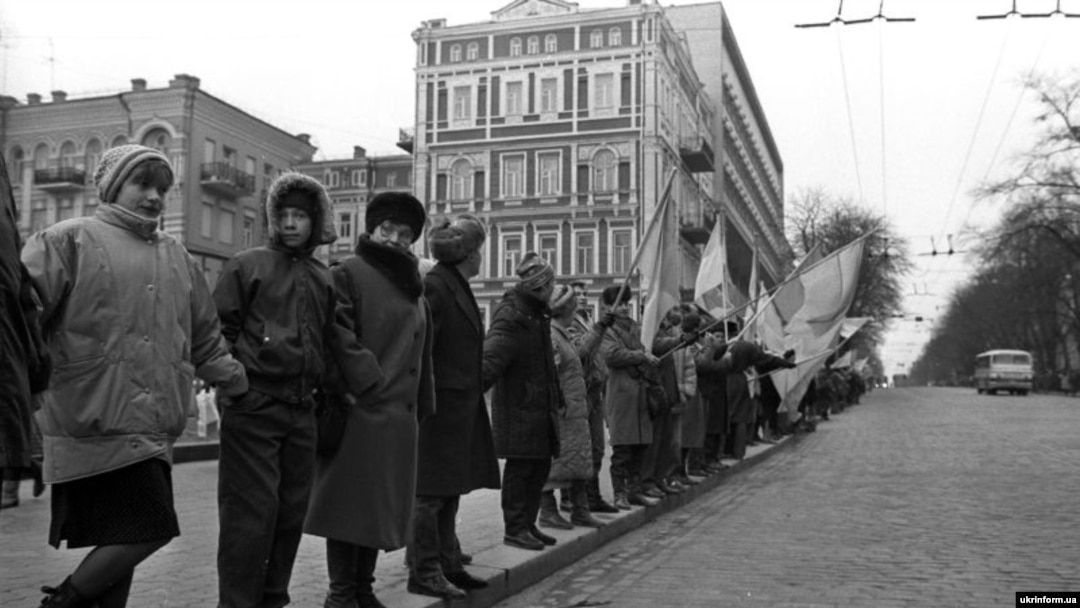KYIV -- Ukrainian officials have marked the 20th anniversary of the human chain that joined some 3 million people hand-in-hand from Lviv to Kyiv in a show of unity, RFE/RL's Ukrainian Service reports.
President Viktor Yushchenko attended ceremonies in Kyiv on January 22, a national holiday in Ukraine known as Unity Day. It was on this day in 1919 that the Ukrainian National Republic united with the Western Ukrainian National Republic to form a short-lived state.
In 1990, shops in the western Ukrainian city of Lviv sold out of blue and yellow fabric as people bought the colors to sew Ukrainian flags while momentum built for independence ahead of the 1991 dissolution of the Soviet Union. The blue and yellow Ukrainian flag was banned during the Soviet era.
Many people recalled creating the human chain in 1990. "It was still the USSR then, but here in western Ukraine things were starting to change," Markian Ivashchyshyn, who took part in the chain in Lviv, told RFE/RL. "We wanted a peaceful, legal action that the authorities couldn't ban.
“The most important thing is that it was successful not just in Lviv, but all the way to Kyiv,” Ivashchyshyn said. “We saw that the national idea [of Ukraine] was not only popular in Lviv.”
Initially unsure about how many people in Kyiv would participate in a human chain, the organizers were pleasantly surprised by the hundreds of thousands of people who turned out in the capital, culminating in a large mass gathering in Kyiv's Sofia Square.
Yushchenko marked Unity Day by granting World War II-era nationalist leader Stepan Bandera the status of Hero of Ukraine. Bandera headed the Organization of Ukrainian Nationalists, which advocated Ukrainian independence.
President Viktor Yushchenko attended ceremonies in Kyiv on January 22, a national holiday in Ukraine known as Unity Day. It was on this day in 1919 that the Ukrainian National Republic united with the Western Ukrainian National Republic to form a short-lived state.
In 1990, shops in the western Ukrainian city of Lviv sold out of blue and yellow fabric as people bought the colors to sew Ukrainian flags while momentum built for independence ahead of the 1991 dissolution of the Soviet Union. The blue and yellow Ukrainian flag was banned during the Soviet era.
Many people recalled creating the human chain in 1990. "It was still the USSR then, but here in western Ukraine things were starting to change," Markian Ivashchyshyn, who took part in the chain in Lviv, told RFE/RL. "We wanted a peaceful, legal action that the authorities couldn't ban.
“The most important thing is that it was successful not just in Lviv, but all the way to Kyiv,” Ivashchyshyn said. “We saw that the national idea [of Ukraine] was not only popular in Lviv.”
Initially unsure about how many people in Kyiv would participate in a human chain, the organizers were pleasantly surprised by the hundreds of thousands of people who turned out in the capital, culminating in a large mass gathering in Kyiv's Sofia Square.
Yushchenko marked Unity Day by granting World War II-era nationalist leader Stepan Bandera the status of Hero of Ukraine. Bandera headed the Organization of Ukrainian Nationalists, which advocated Ukrainian independence.


